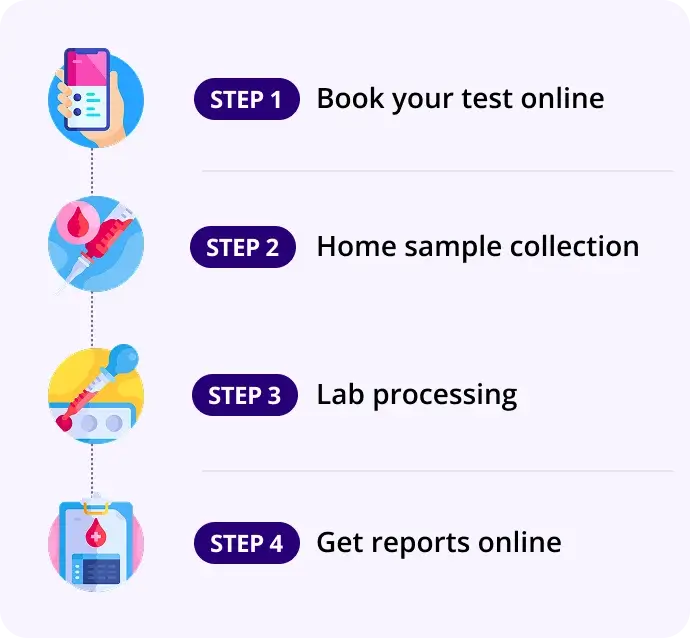Bicarbonate
Report in 16Hrs
At Home
No Fasting Required
Details
Bicarbonate is a key buffer in the blood that helps maintain acid–base balance (pH). It is regulated by the lungs (through CO₂ exchange) and kidneys (via reabsorption or excretion).
₹375₹625
40% OFF
🧪 Bicarbonate (HCO₃⁻) Test
Parameter | Details |
|---|---|
Test Name | Bicarbonate / Serum Bicarbonate / CO₂ Content |
Sample Type | Serum (via venous blood draw) |
Fasting Required | ❌ Not typically required |
Test Method | Enzymatic or Ion-Selective Electrode |
Department | Biochemistry / Nephrology / Pulmonology |
Normal Range | 22–29 mmol/L (may vary slightly by lab) |
🧬 What Is Bicarbonate?
Bicarbonate is a key buffer in the blood that helps maintain acid–base balance (pH). It is regulated by the lungs (through CO₂ exchange) and kidneys (via reabsorption or excretion).
🧠 Organs/Systems Involved
System | Function |
|---|---|
Lungs | Regulate CO₂ → affects bicarbonate via respiration |
Kidneys | Filter and reabsorb bicarbonate → maintain acid-base balance |
Metabolic System | Involved in buffering acids formed during normal metabolism |
🎯 Why Is the Test Done?
Clinical Purpose | Details |
|---|---|
🧪 Evaluate Acid-Base Disorders | Part of diagnosing metabolic acidosis or alkalosis |
🩺 Kidney Function Assessment | In chronic kidney disease (CKD), bicarbonate levels drop |
🫁 Respiratory Conditions | Used with ABG to assess respiratory vs. metabolic components |
💉 Monitor Critical Illness | Used in ICU, dehydration, shock, or electrolyte imbalance cases |
📉 Low Bicarbonate (Metabolic Acidosis)
Possible Causes |
|---|
Diabetic ketoacidosis |
Chronic kidney disease |
Lactic acidosis |
Severe diarrhea (bicarbonate loss from gut) |
Poisoning (e.g., methanol, salicylates) |
Sepsis or shock |
📈 High Bicarbonate (Metabolic Alkalosis)
Possible Causes |
|---|
Prolonged vomiting (loss of gastric acid) |
Excessive antacid use |
Diuretic therapy (e.g., thiazides, loop) |
Hypokalemia |
🔄 Recommended Tests Alongside Bicarbonate
Test | Why? |
|---|---|
Arterial Blood Gas (ABG) | Direct measure of blood pH, pCO₂, HCO₃⁻ |
Electrolyte Panel | Sodium, potassium, chloride → for acid-base interpretation |
Anion Gap Calculation | Helps differentiate types of metabolic acidosis |
Kidney Function Tests | Creatinine, BUN, eGFR |
Lactate | Elevated in lactic acidosis |
Urine pH | Assess renal handling of acid/base |
📋 Quick Summary Table
Test | Bicarbonate (HCO₃⁻) |
|---|---|
Sample | Serum (venous blood) |
Fasting Needed | ❌ No |
Used For | Acid-base evaluation, kidney and respiratory conditions |
Normal Range | 22–29 mmol/L |
High Levels | Alkalosis, vomiting, diuretic use |
Low Levels | Acidosis, kidney disease, diarrhea, DKA |
How our test process works!

